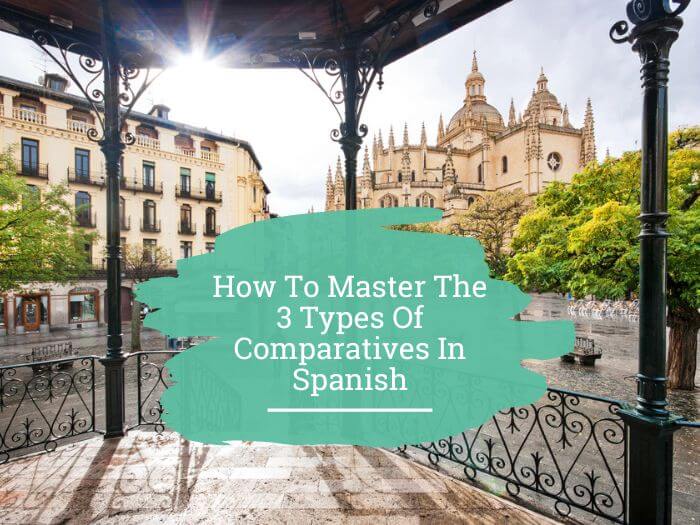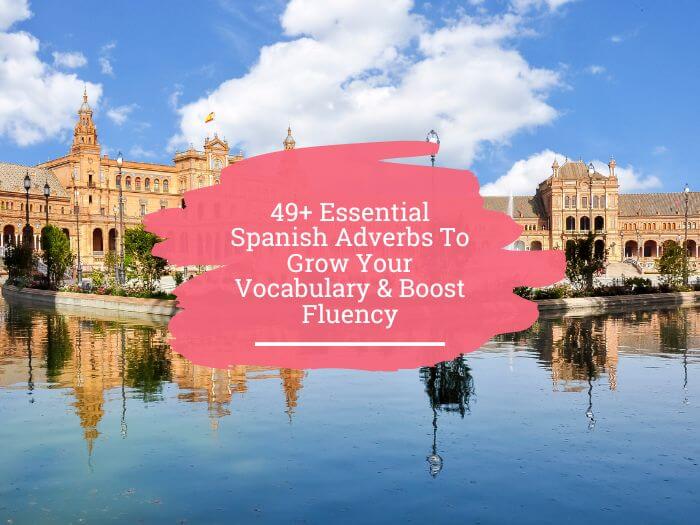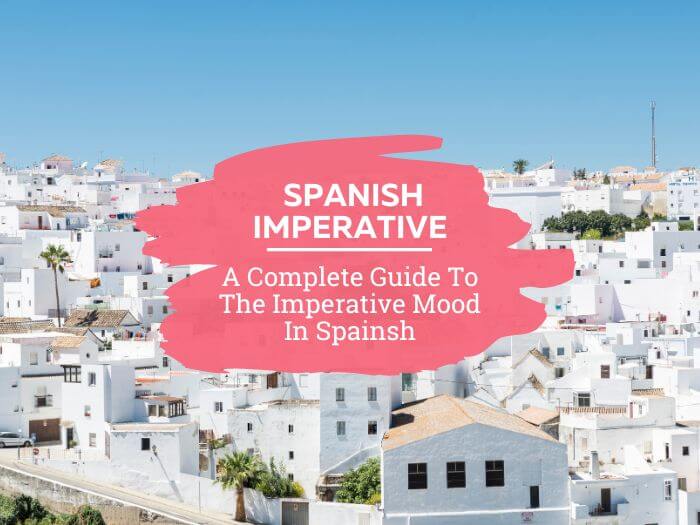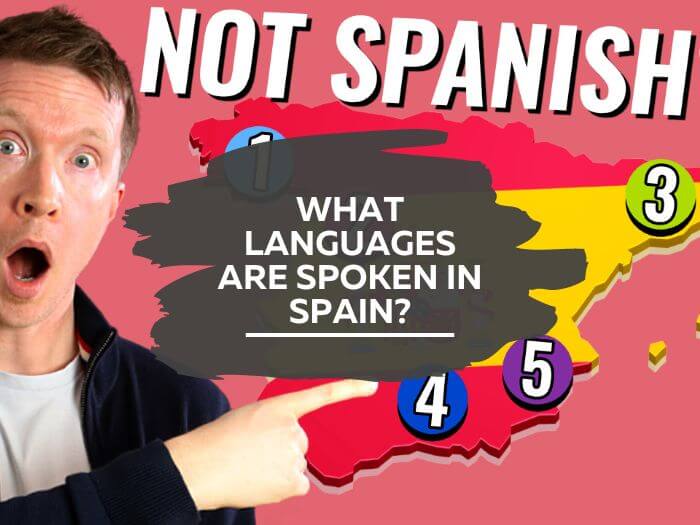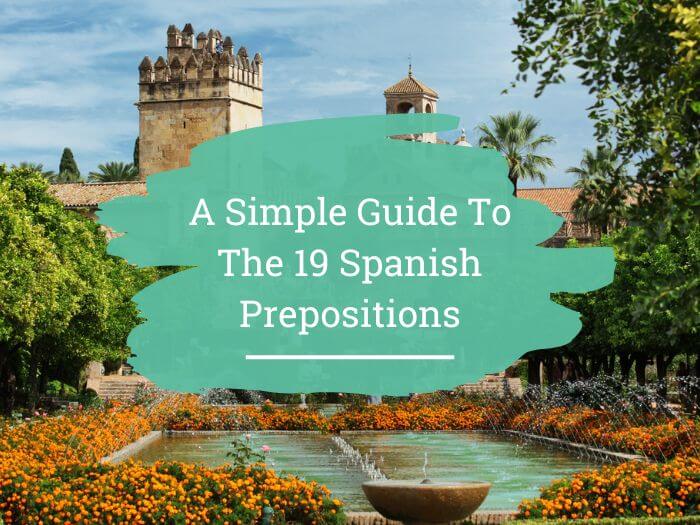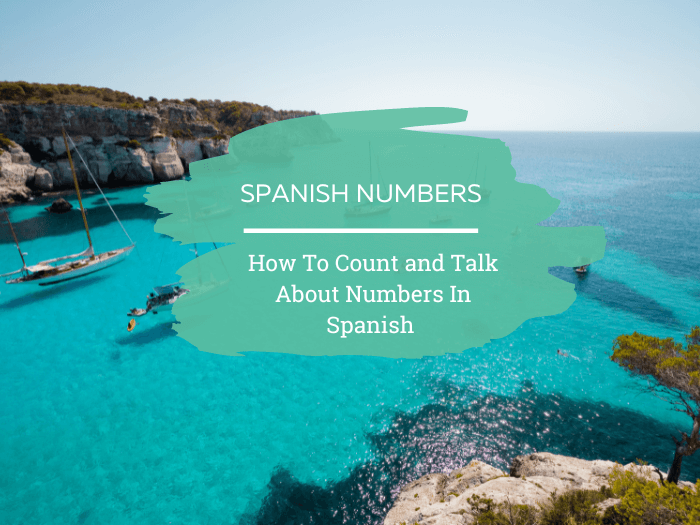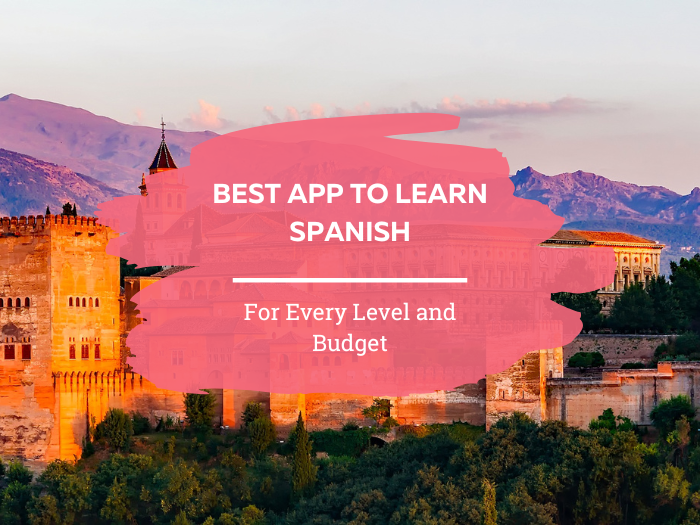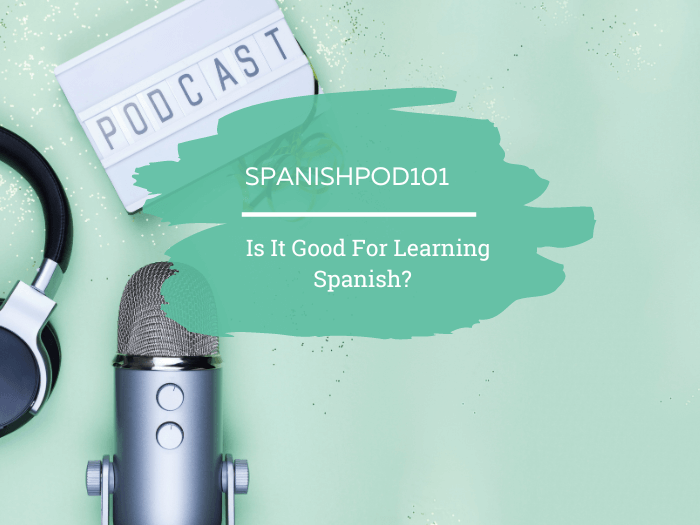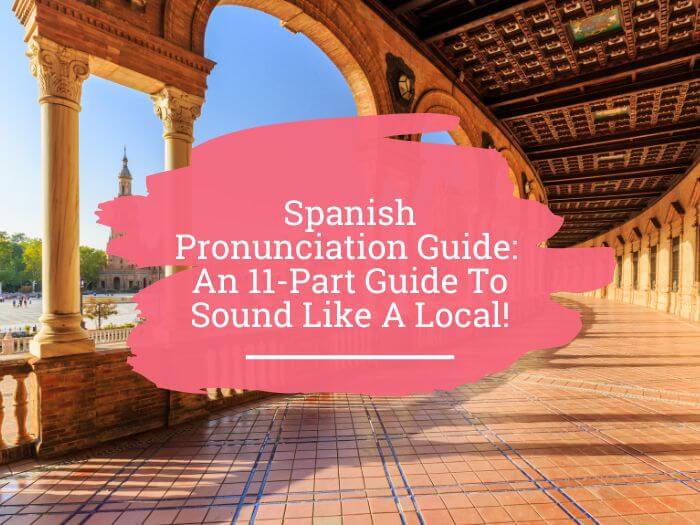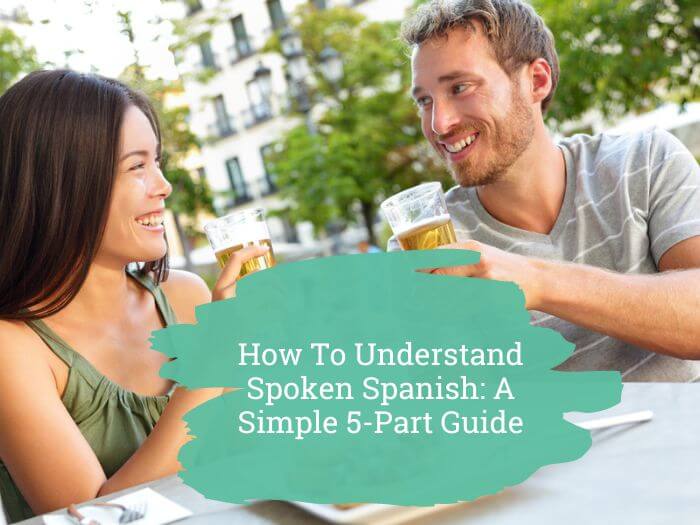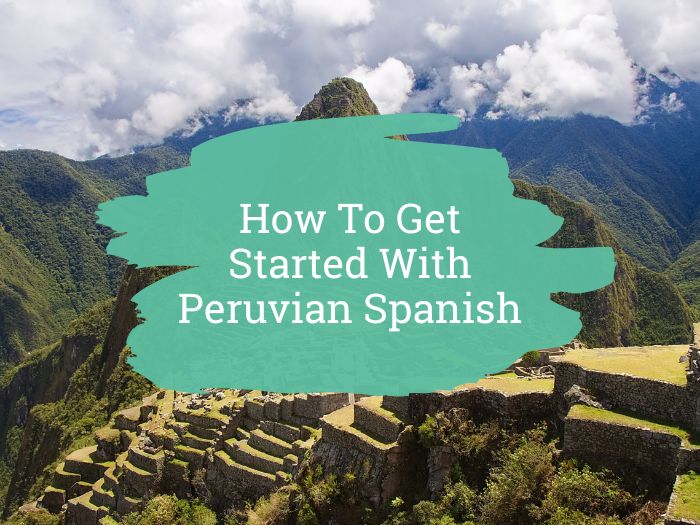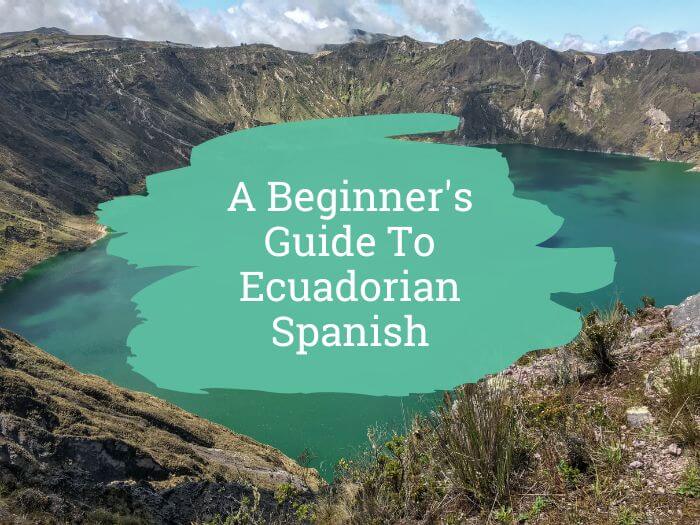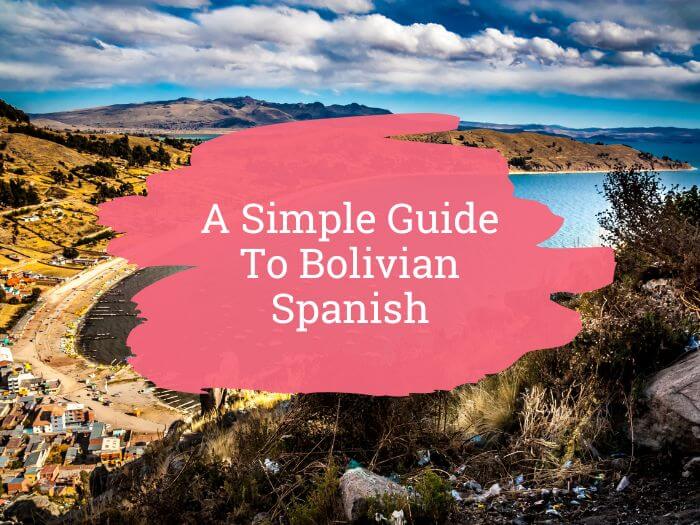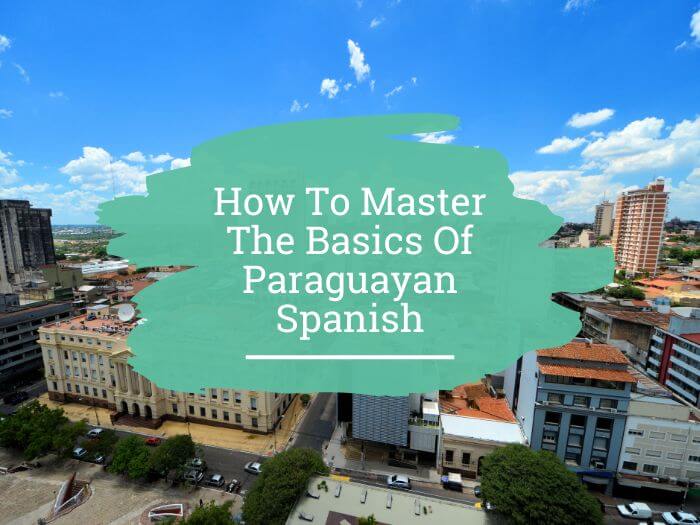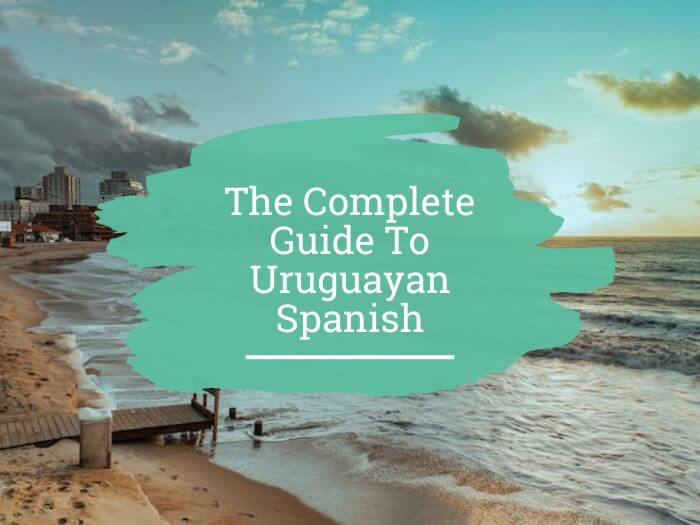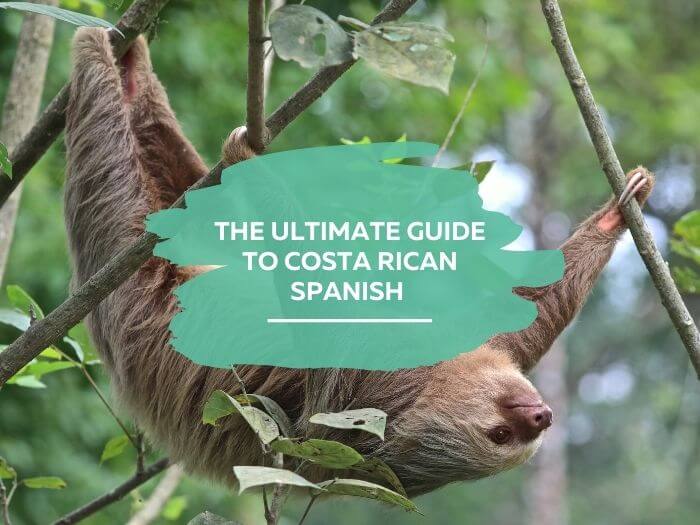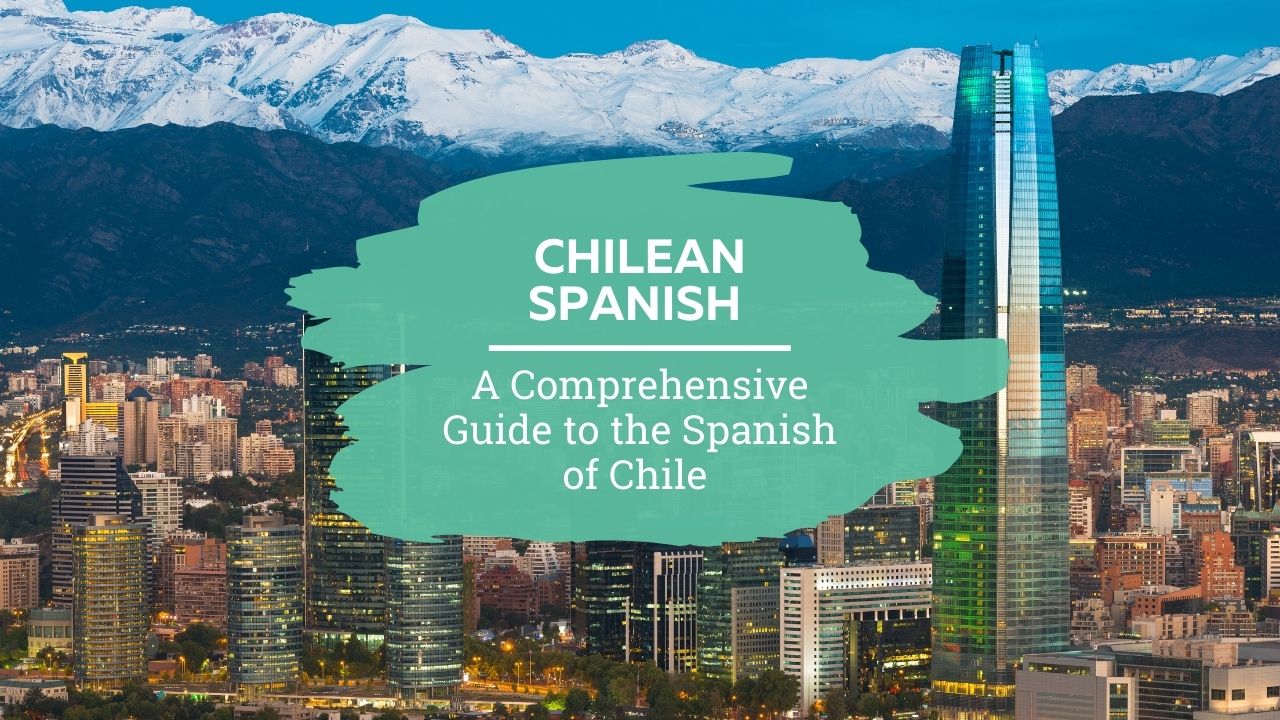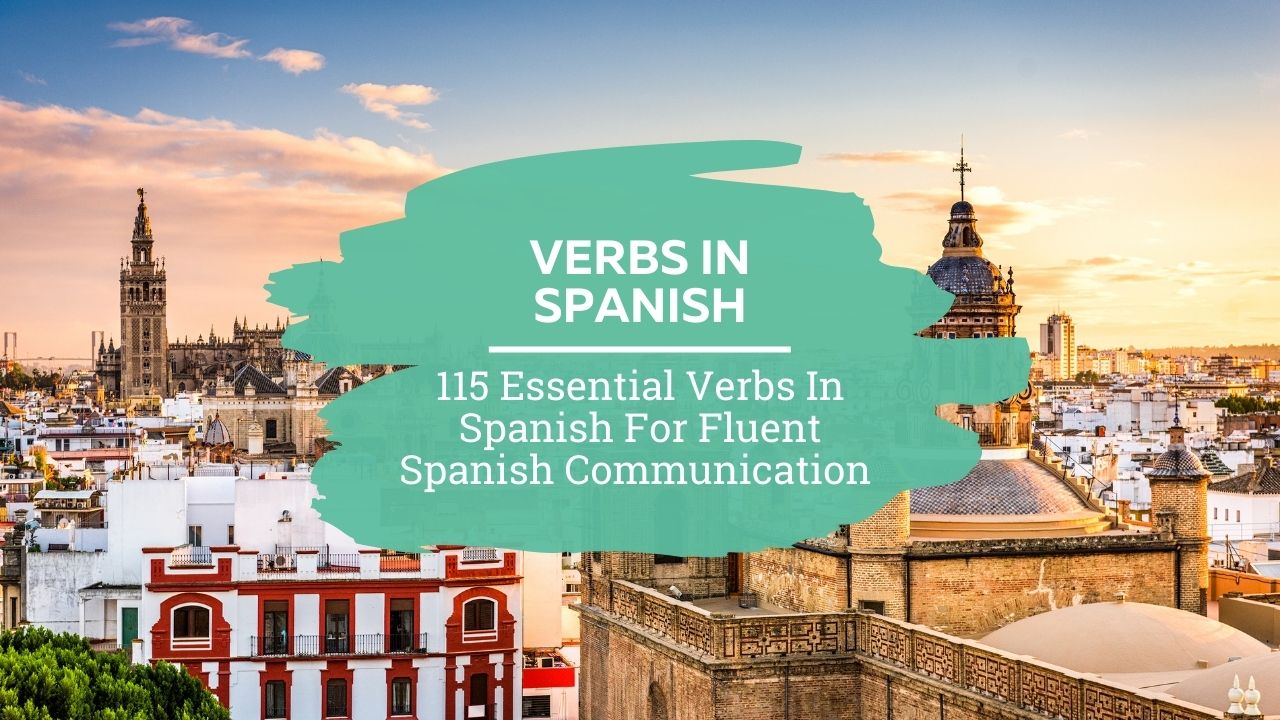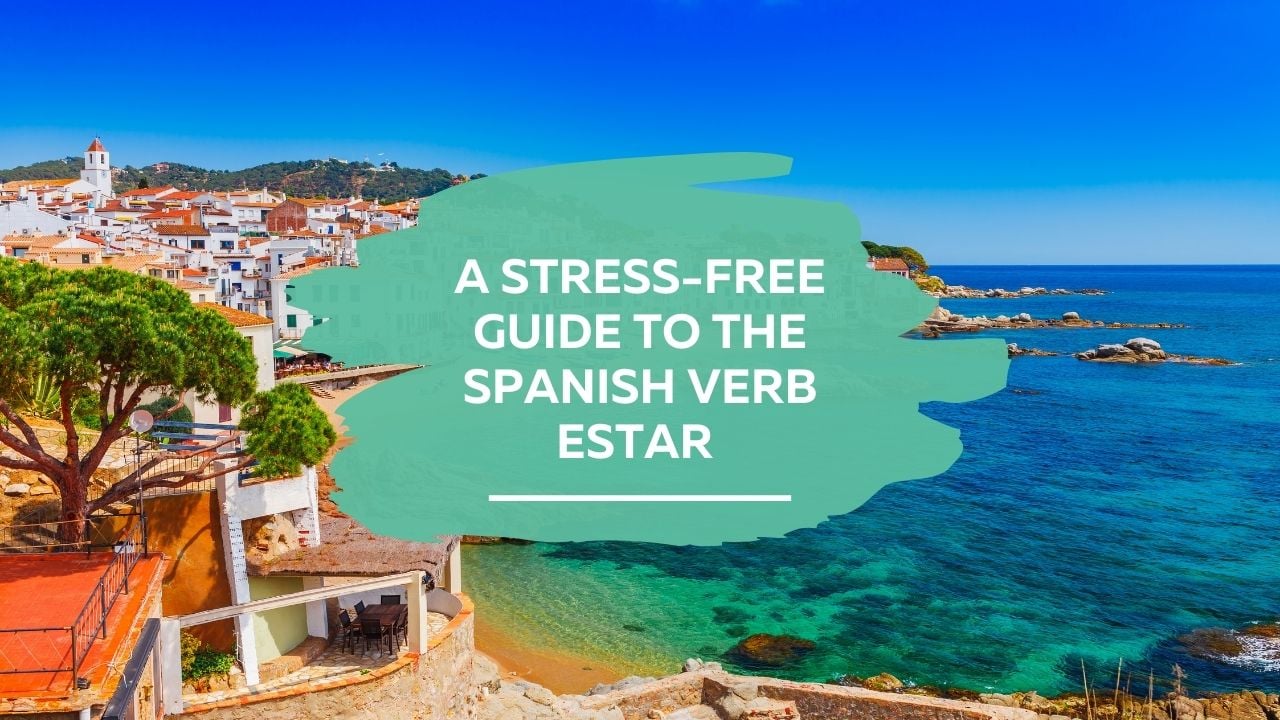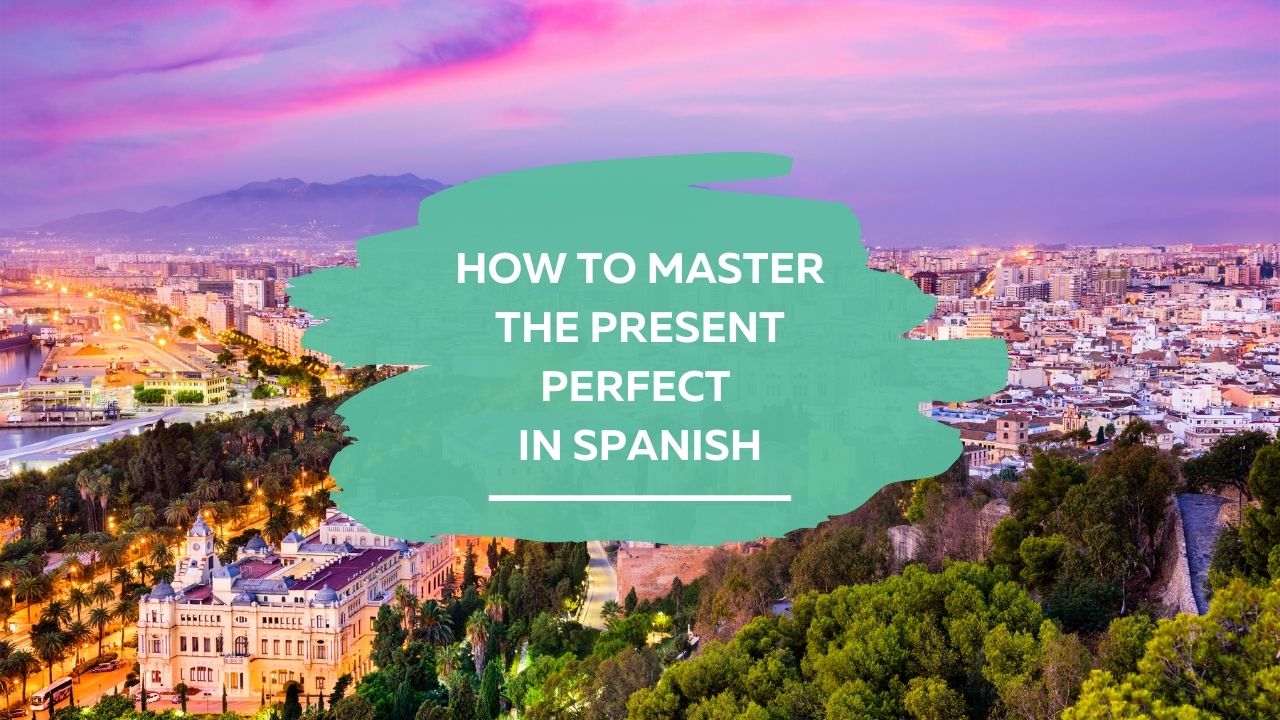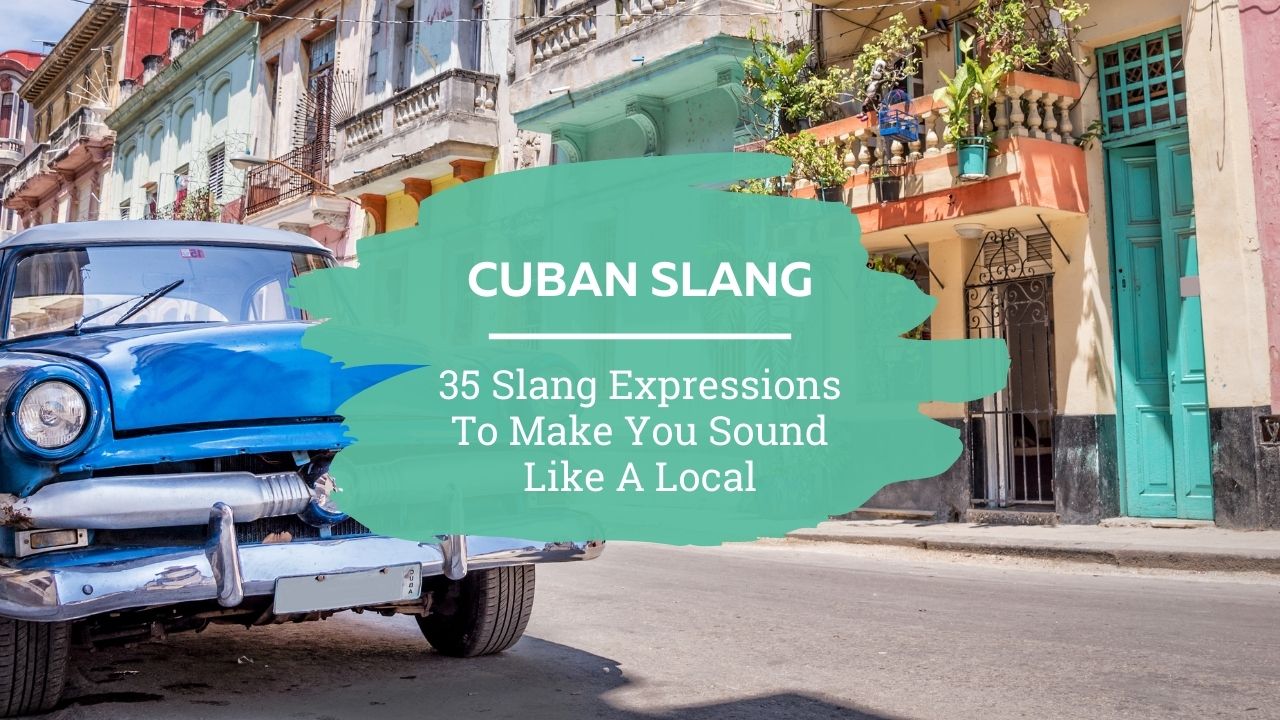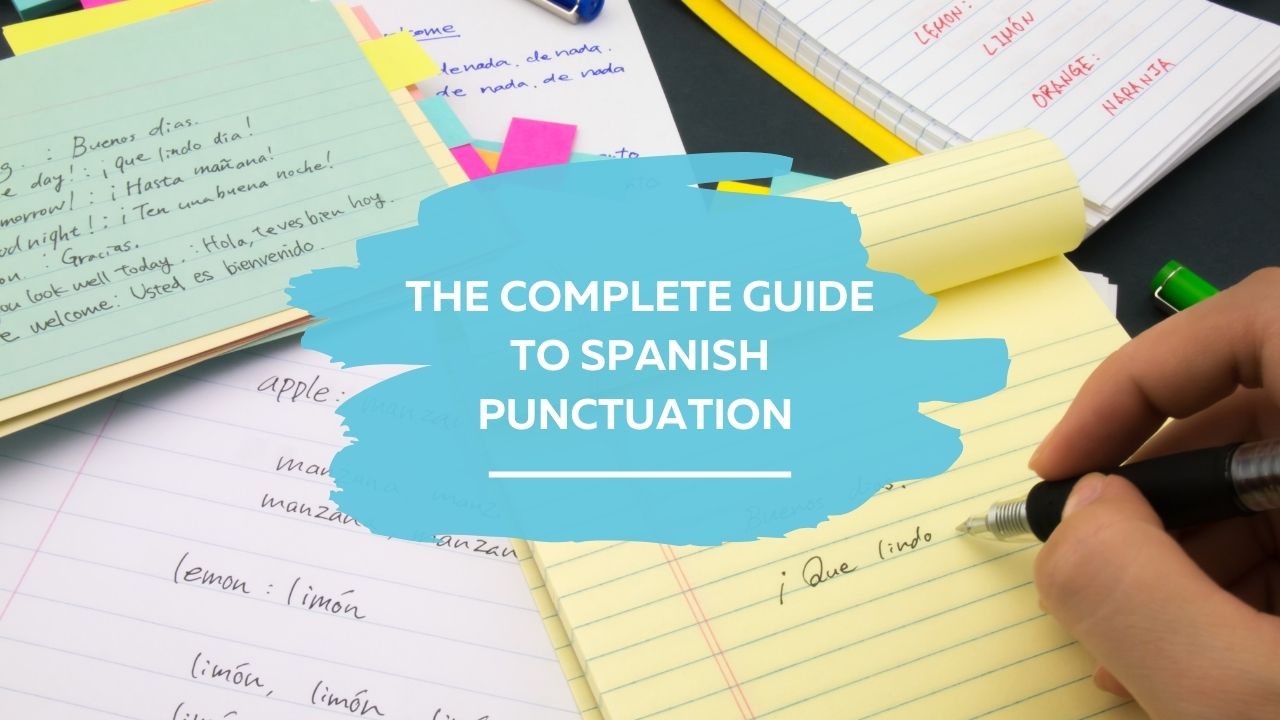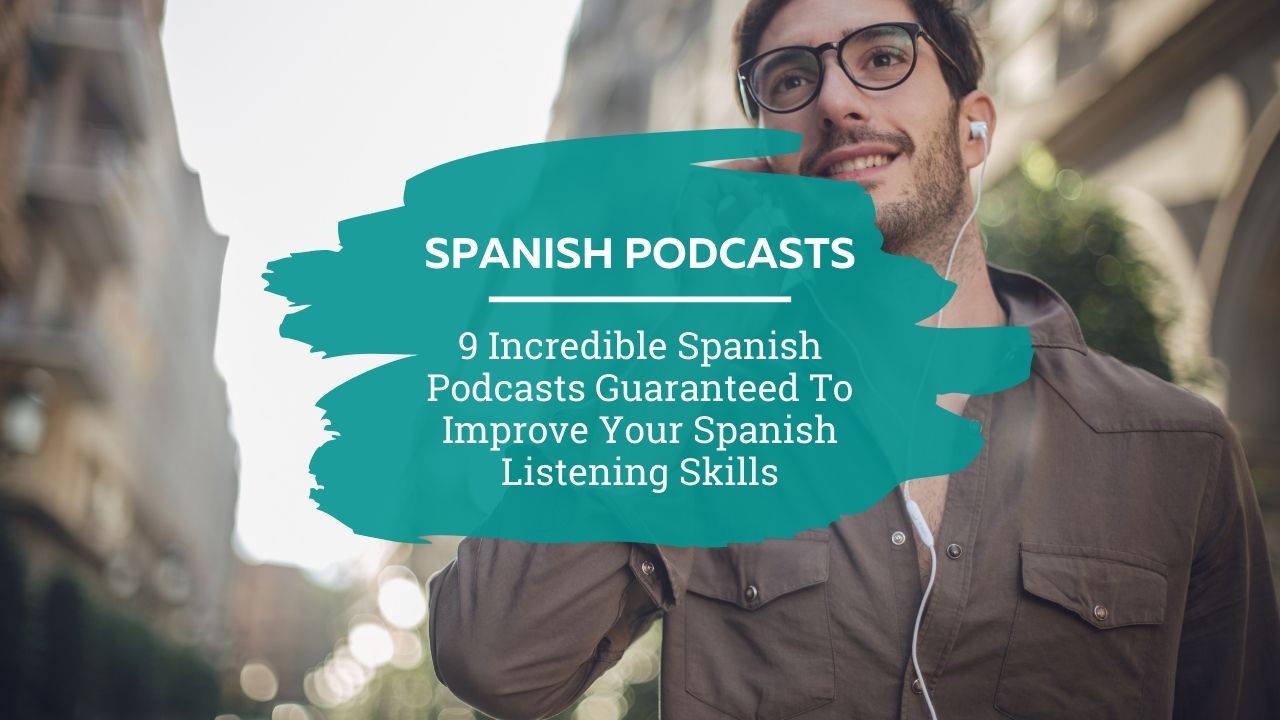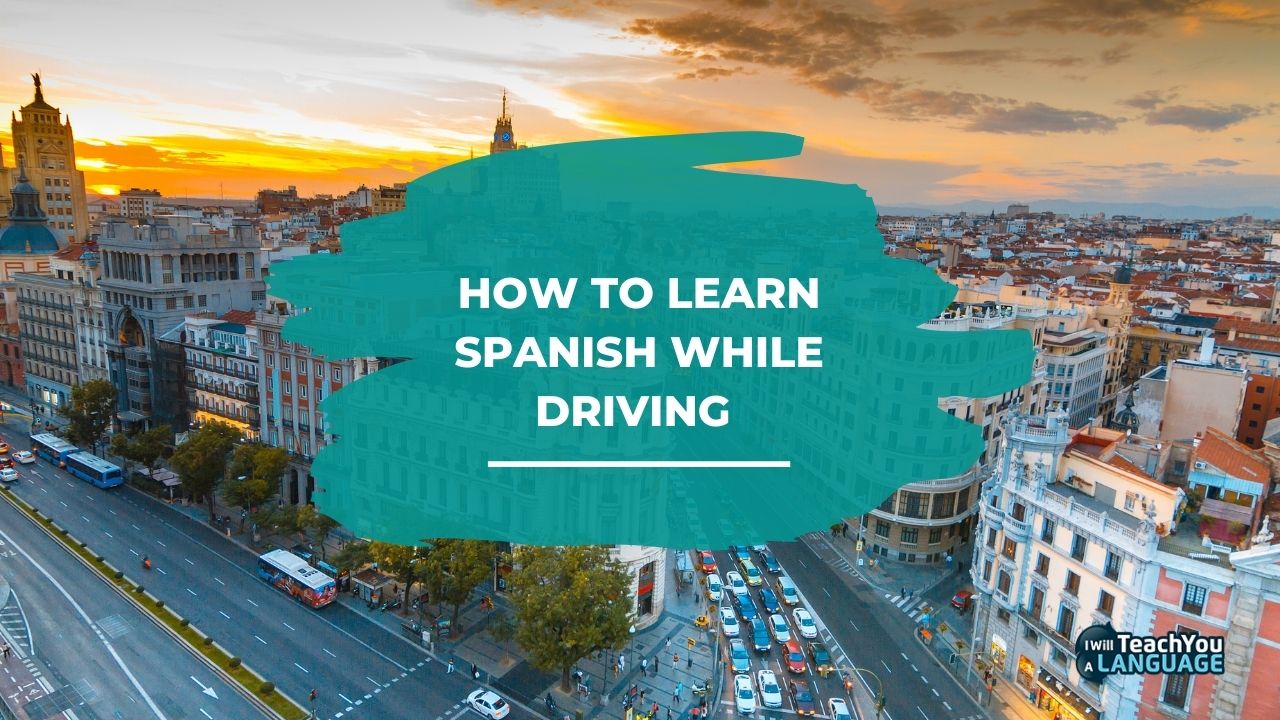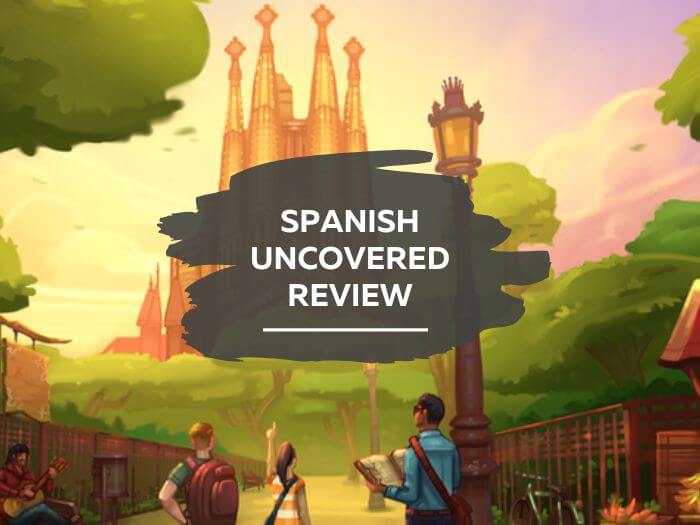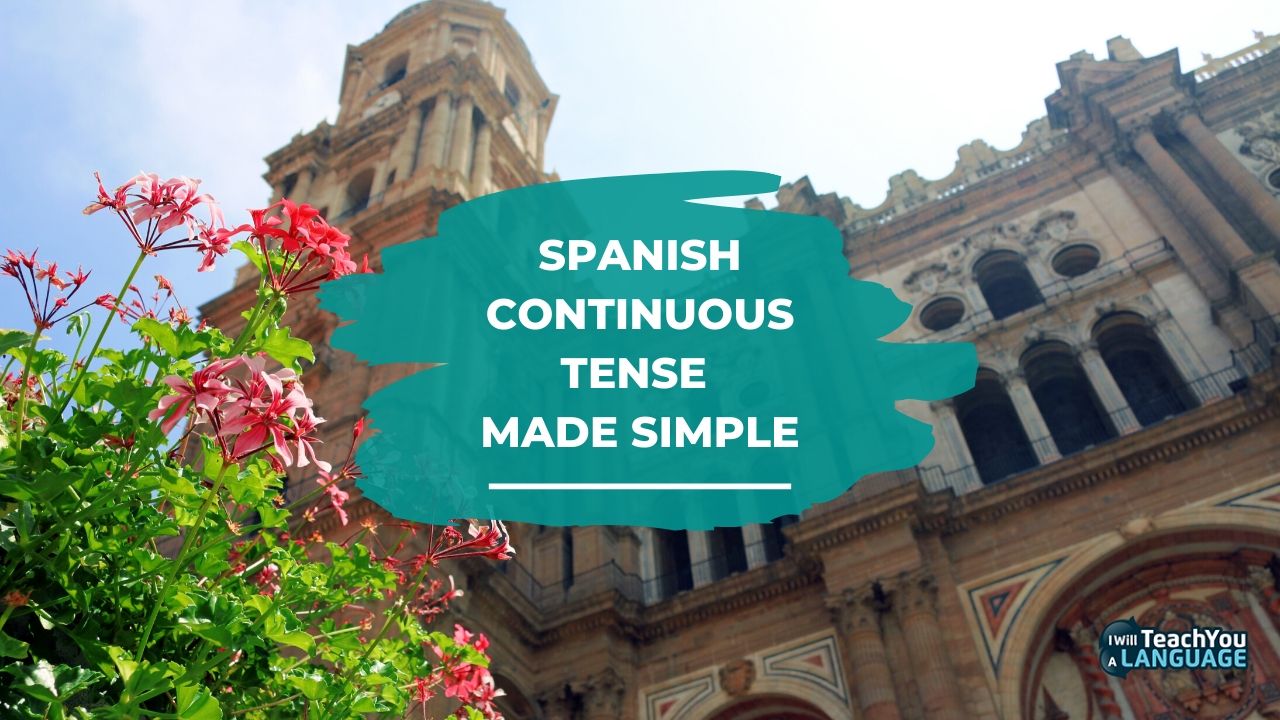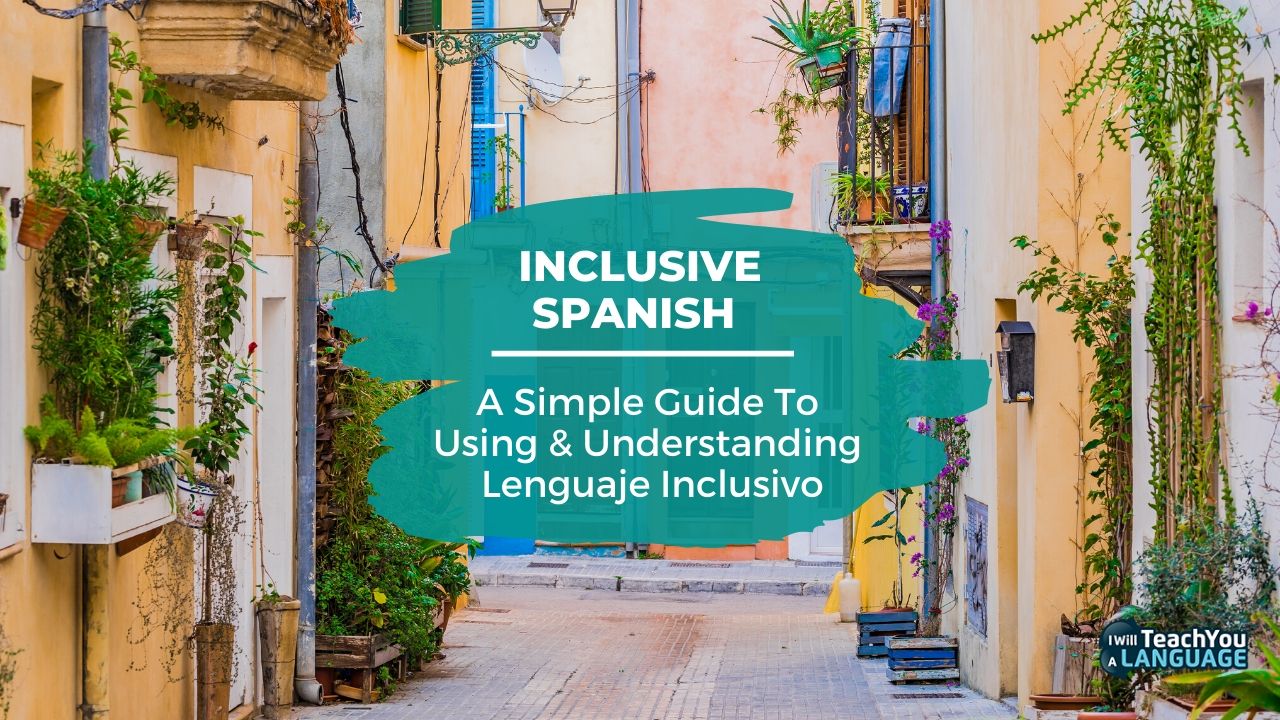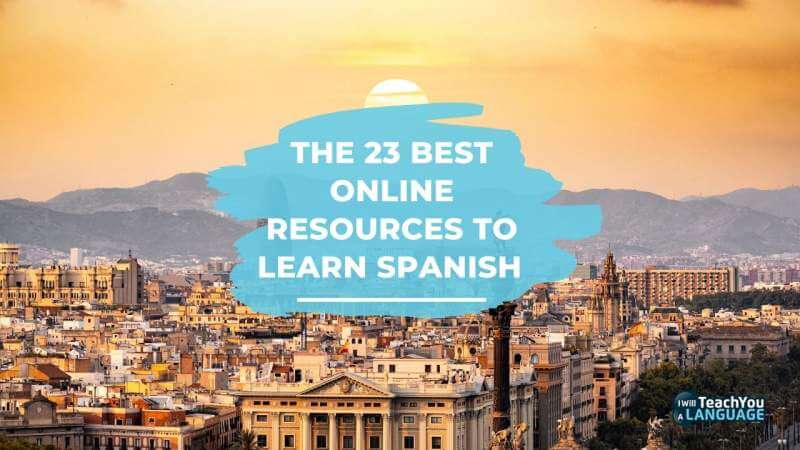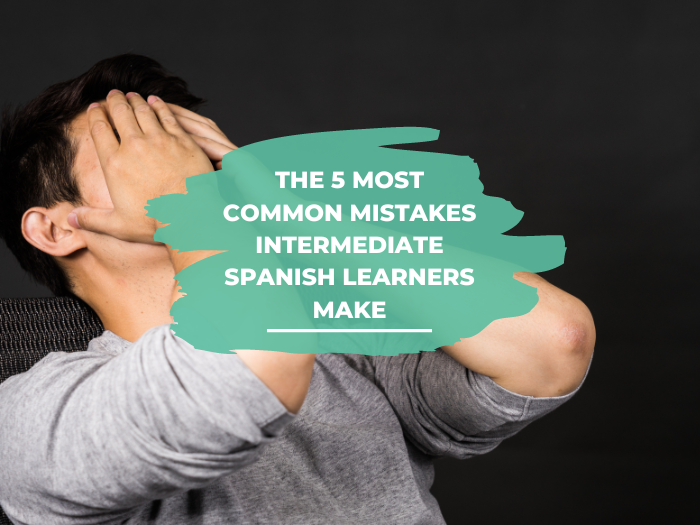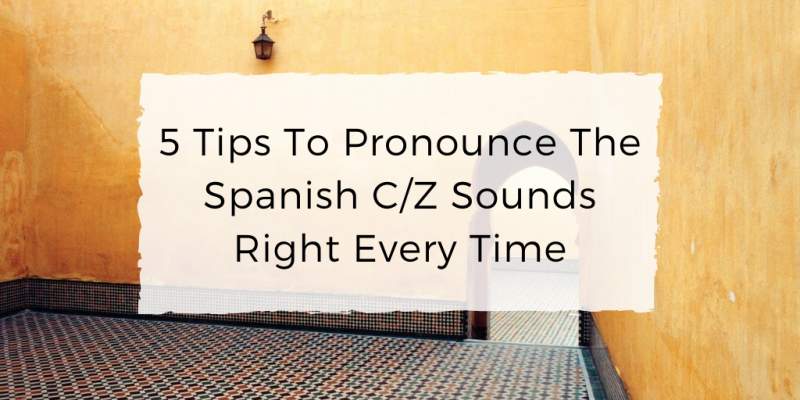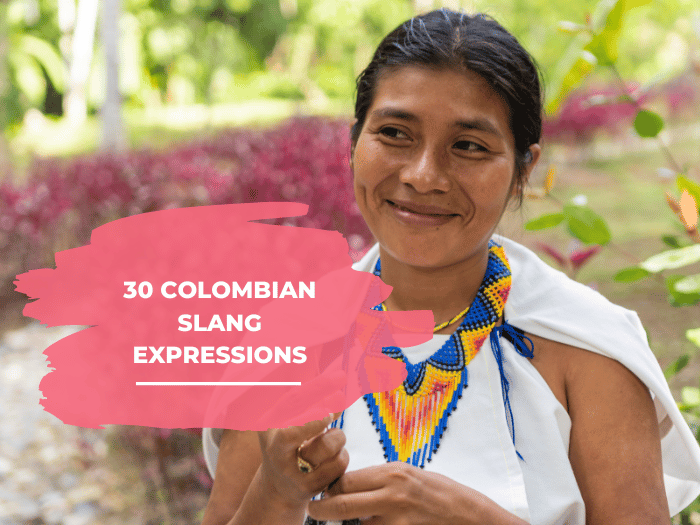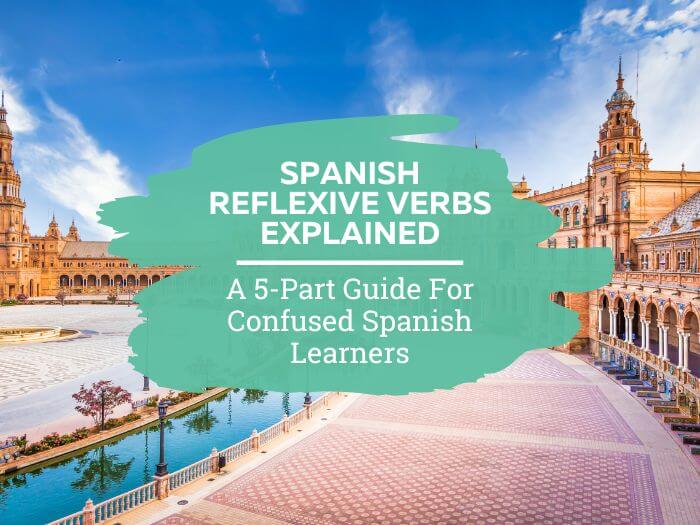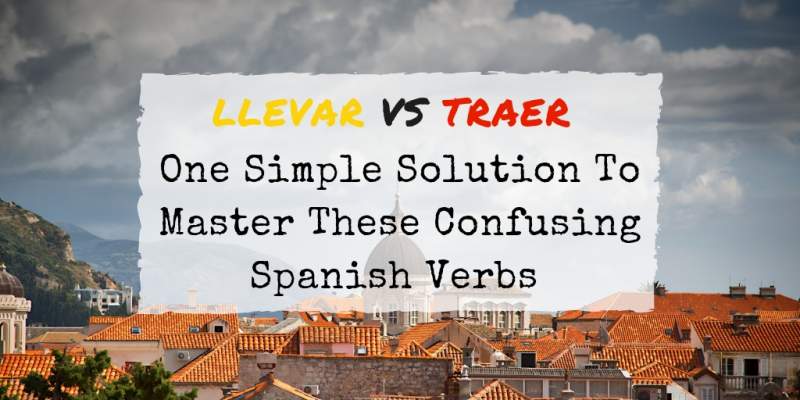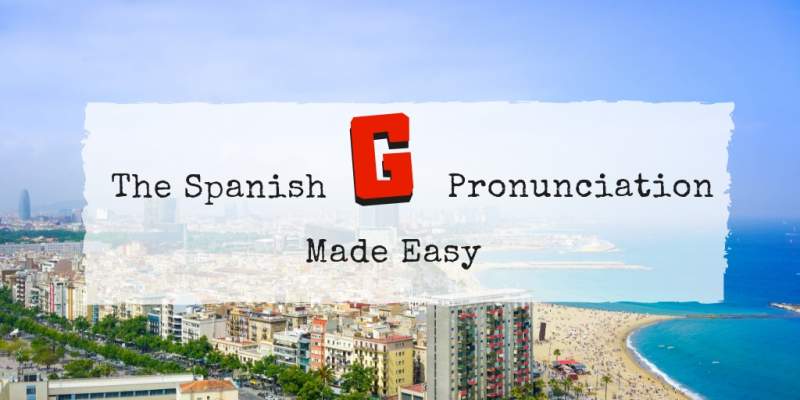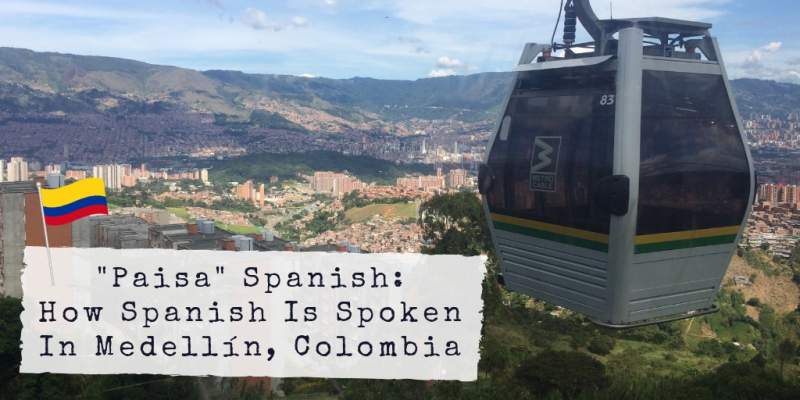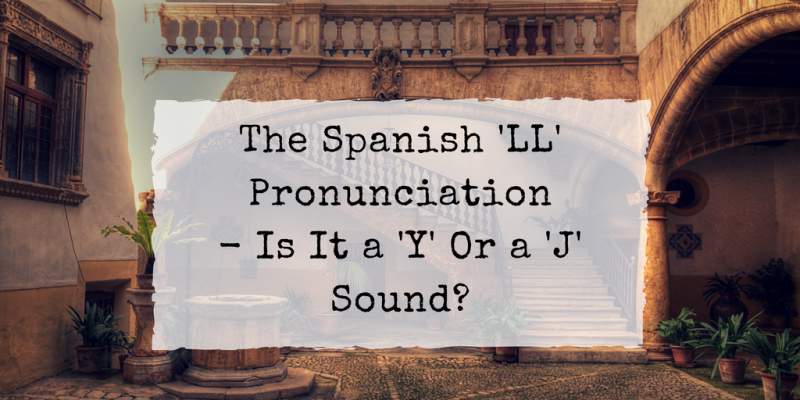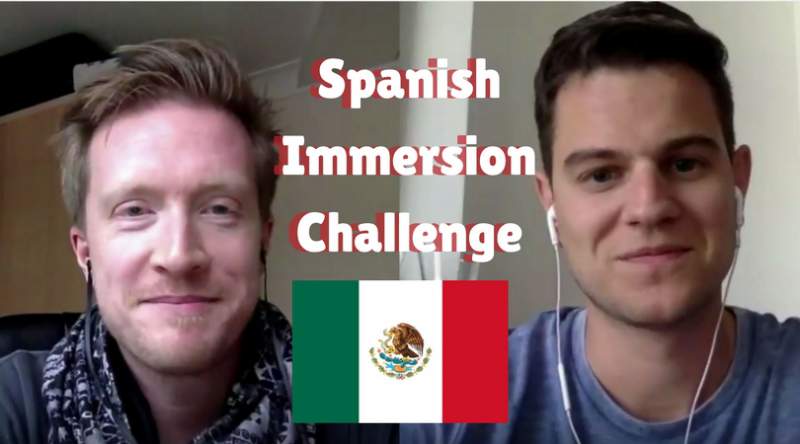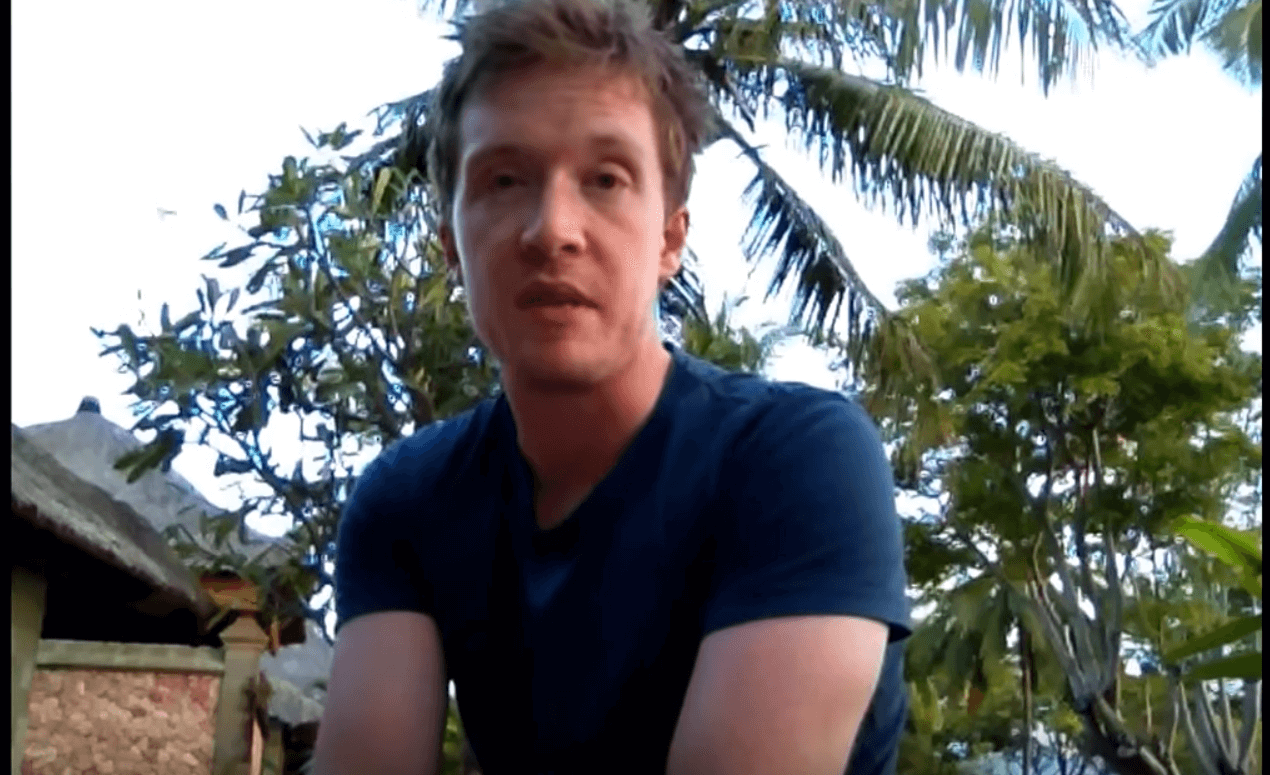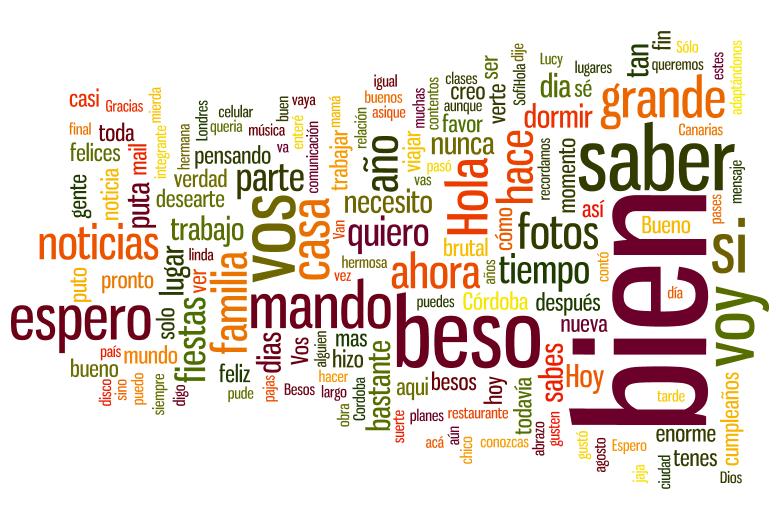Looking for the perfect song for your Spanish-speaking crush? Are your feelings for them so huge that you need to find new words to express … Read More about Love Songs In Spanish: Get Romantic With These 30 Spanish Love Songs
Spanish
The 15 Best Mexican Songs Of All Time
Mexican songs really have a lot to offer: regional styles, amazing backstories, centuries-old melodies or songs covered by the most unlikely … Read More about The 15 Best Mexican Songs Of All Time
Learn Spanish With AI: Ten Tips To Master Spanish With Chatbots
Can you learn Spanish with AI? Is AI Spanish learning already a thing? What’s the best AI Spanish learning app? As it makes its way … Read More about Learn Spanish With AI: Ten Tips To Master Spanish With Chatbots
The Best Way to Learn Spanish
So you want to learn Spanish? You're in the right place. The internet is full of resources to help you master Spanish from the comfort of … Read More about The Best Way to Learn Spanish
Traditional Mexican Food: 20 Authentic Mexican Dishes To Try
Culture and traditions can take many forms and consist of many rituals. And cooking or having a meal can be an integral part of them. … Read More about Traditional Mexican Food: 20 Authentic Mexican Dishes To Try
10 Famous Spanish Artists Who Shaped Art History
Spain has a rich and complex history that spans centuries of political, religious, and artistic influences and still influences many other … Read More about 10 Famous Spanish Artists Who Shaped Art History
The Ultimate Guide To Superlatives In Spanish
Do you ever wish you could become the best Spanish speaker of all? Perhaps the greatest of all time... One thing that will help you reach … Read More about The Ultimate Guide To Superlatives In Spanish
10 Traditional Mexican Dance Styles
Can you learn Spanish and discover the culture it represents by finding out how it moves to the rhythm? Definitely, and this selection of … Read More about 10 Traditional Mexican Dance Styles
20+ Spanish Homonyms To Become The Life Of The Party
When you learn Spanish, you soon discover it's crisscrossed with secrets and tricks waiting to be discovered. That's why you always need to … Read More about 20+ Spanish Homonyms To Become The Life Of The Party
Passive Voice In Spanish Made Simple
Learning Spanish? Eager to tackle advanced topics? Then stick around, because this article is all about passive voice in Spanish! … Read More about Passive Voice In Spanish Made Simple
How To Unlock Perfect Pronunciation & Spelling With Spanish Accent Marks
Learning a foreign language can be a challenging task. The good news is that when you learn Spanish, you don't need to worry about learning … Read More about How To Unlock Perfect Pronunciation & Spelling With Spanish Accent Marks
50 + Spanish Exclamations For More Expressive Spanish
One common stereotype of Spanish speakers is that they're loud, passionate and affectionate. The truth is that even if you're learning … Read More about 50 + Spanish Exclamations For More Expressive Spanish
How To Master The 3 Types Of Comparatives In Spanish
If you're learning Spanish and have strong opinions and like to pretend you're a movie, music or food critic in your daily life (or perhaps … Read More about How To Master The 3 Types Of Comparatives In Spanish
The 8 Best Mexican Movies To Master Mexican Spanish From Your Living Room
Are you learning Spanish? Do you want to boost your listening skills but are tired of listening to boring audio exercises from textbooks? … Read More about The 8 Best Mexican Movies To Master Mexican Spanish From Your Living Room
49+ Essential Spanish Adverbs To Grow Your Vocabulary & Boost Fluency
How are you learning Spanish so far? Quickly, steadily, or clumsily? Well, your Spanish is about to get a boost, all thanks to this article. … Read More about 49+ Essential Spanish Adverbs To Grow Your Vocabulary & Boost Fluency
Spain Spanish vs Mexican Spanish: 3 Key Differences & Surprising Similarities
If you're learning Spanish (or considering it) then you probably know it's one of the most spoken languages you can find along with English … Read More about Spain Spanish vs Mexican Spanish: 3 Key Differences & Surprising Similarities
A Complete Guide To The Spanish Imperative
¡Escúchame! If you want to learn Spanish to fluency, study long and hard. Take it from me: I've been through the learning process many times … Read More about A Complete Guide To The Spanish Imperative
What Languages Are Spoken In Spain?
When you learn Spanish, you might think all Spaniards speak Spanish. But think again! I have a surprise for you. … Read More about What Languages Are Spoken In Spain?
A Simple Guide To The 19 Spanish Prepositions
If you're learning Spanish then I'm sure you've come across Spanish prepositions many times already. Spanish prepositions are words that … Read More about A Simple Guide To The 19 Spanish Prepositions
The Spanish Future Tense Made Simple
Learning Spanish? Overwhelmed by the big number of verb tenses? I have good news about the Spanish future tense - it's one of the easier … Read More about The Spanish Future Tense Made Simple
The Ultimate Guide To Las Fallas For Spanish Learners
If you're learning Spanish then you've probably noticed that Spain knows how to celebrate. With events for everything from bull running … Read More about The Ultimate Guide To Las Fallas For Spanish Learners
10 Incredible Spanish Movies That Are Perfect For Intermediate Learners
I'm delighted to feature a guest post by Katie Porter about the best Spanish-language movies. If you're learning Spanish and you've … Read More about 10 Incredible Spanish Movies That Are Perfect For Intermediate Learners
A Stress-Free Guide To Mastering Spanish Adjectives
Mastering Spanish adjectives ultimately comes down to two things: (1) how to form the adjectives, and (2) where the adjectives are placed in … Read More about A Stress-Free Guide To Mastering Spanish Adjectives
Learn Spanish in Barcelona: How I Learnt A Language Abroad
This is a post by Jessica Elliot from Sky Blue English. Jessica decided to learn Spanish in Barcelona and here is her story! By the way, … Read More about Learn Spanish in Barcelona: How I Learnt A Language Abroad
Spanish Numbers: How To Count And Talk About Numbers In Spanish
When you learn Spanish or any other language, one of the first things you learn is how to count to 10. In fact, counting is one of the … Read More about Spanish Numbers: How To Count And Talk About Numbers In Spanish
The Best App To Learn Spanish: 19 Options For Every Level And Budget
Learning Spanish is easier than ever before. There has never been a better time to learn a new language, even if you are on a tight budget … Read More about The Best App To Learn Spanish: 19 Options For Every Level And Budget
SpanishPod101 Review: Is It Any Good?
This article is a review of SpanishPod101.com, an online resource for learning Spanish through audio podcasts. … Read More about SpanishPod101 Review: Is It Any Good?
Learn Spanish In South America: 10 Ways To Pick Up Spanish While Backpacking
I guarantee you you'll never have so much fun in your life! South America is great, but it's even better if you speak Spanish (or Portuguese … Read More about Learn Spanish In South America: 10 Ways To Pick Up Spanish While Backpacking
29 Mexican Slang Words & Phrases To Sound Like A Native In No Time!
Mexico. The most populous Spanish-speaking country in the world and one of the most influential in terms of Spanish language film and … Read More about 29 Mexican Slang Words & Phrases To Sound Like A Native In No Time!
Spanish Language History: A Guide For Curious Language Learners
If you're learning Spanish then you should know that Spanish language history is a fascinating subject. Languages evolve slowly but … Read More about Spanish Language History: A Guide For Curious Language Learners
Spanish Pronunciation Guide: An 11-Part Guide To Sound Like A Local!
Did you know that pronunciation doesn’t have to be the most challenging part of learning Spanish!? In fact, linguists consider Spanish … Read More about Spanish Pronunciation Guide: An 11-Part Guide To Sound Like A Local!
Get A Grip On Basic Spanish Grammar With These 10 Essential Rules
When you learn Spanish, grammar rules can overwhelm you, but the process of learning it doesn’t have to be a headache! Yes, all … Read More about Get A Grip On Basic Spanish Grammar With These 10 Essential Rules
The 10 Best Spanish Learning Blogs
When learning Spanish, or any language, practice is key. You can study real hard, go to your classes and do your homework, but nothing … Read More about The 10 Best Spanish Learning Blogs
A Simple Guide To The 5 Most Common Spanish Irregular Verbs
It’s time to talk about one of the most complex parts of learning Spanish: Spanish irregular verbs. … Read More about A Simple Guide To The 5 Most Common Spanish Irregular Verbs
How To Understand Spoken Spanish: A Simple 5-Part Guide
If you're learning Spanish then you may have noticed that spoken Spanish is tough to understand. But consider this: Do Spanish natives … Read More about How To Understand Spoken Spanish: A Simple 5-Part Guide
23 Greetings In Spanish To Start Connecting With Spanish Speakers
Hola! I’m sure you’ve heard that word a million times, whether you've just started learning Spanish or you're an advanced Spanish learner. … Read More about 23 Greetings In Spanish To Start Connecting With Spanish Speakers
How To Get Started With Peruvian Spanish
If you're learning Spanish, then perhaps your goal is to visit Peru, one of the most fascinating countries in Latin America. Home to an … Read More about How To Get Started With Peruvian Spanish
A Beginner’s Guide To Ecuadorian Spanish
Learning Spanish means learning an incredibly diverse language, spoken natively by almost six hundred million people in twenty-two countries … Read More about A Beginner’s Guide To Ecuadorian Spanish
A Simple, No-Nonsense Guide To Bolivian Spanish
If you're learning Spanish, then it might be because you want to visit some of the most beautiful countries in the world, such as Bolivia. … Read More about A Simple, No-Nonsense Guide To Bolivian Spanish
The 6 Best Online Spanish Tutoring Services
Learning Spanish but have no-one to practise your Spanish speaking skills with? Then you need to discover these 6 best online Spanish … Read More about The 6 Best Online Spanish Tutoring Services
How To Master The Basics Of Paraguayan Spanish
Spanish is one of the most diverse languages in the world - maybe that's why you're learning Spanish. Spread around three continents … Read More about How To Master The Basics Of Paraguayan Spanish
The Complete Guide To Uruguayan Spanish
If you're learning Spanish, then you might know that it's the official language in 21 countries. So it’s no surprise that there are a lot of … Read More about The Complete Guide To Uruguayan Spanish
Panamanian Spanish: A Simple Guide To Slang & Pronunciation In Panama
Hey Spanish learner - welcome to Panama: one of the most prosperous countries in Latin America. Its strategic geographical position in … Read More about Panamanian Spanish: A Simple Guide To Slang & Pronunciation In Panama
La Tomatina: The Juicy Guide To The World’s Biggest Food Fight
Why did you start learning Spanish? Was it to connect better with the locals on trips to Spain? To experience the culture like a … Read More about La Tomatina: The Juicy Guide To The World’s Biggest Food Fight
Honduran Spanish: A Spanish Learner’s Guide To Honduran Unique Pronunciation & Slang
When you learn Spanish, you quickly realise that there are many different varieties throughout the world and Honduran Spanish is no … Read More about Honduran Spanish: A Spanish Learner’s Guide To Honduran Unique Pronunciation & Slang
The Ultimate Guide To Costa Rican Spanish
If you're learning Spanish, you've probably noticed by now that there are a ton of different varieties, and Costa Rican Spanish is yet … Read More about The Ultimate Guide To Costa Rican Spanish
10 Incredible Spanish TV Shows On Netflix You Need To Watch
When learning Spanish or any new language, ear training is key and what better way to do it than while enjoying Spanish TV shows on Netflix? … Read More about 10 Incredible Spanish TV Shows On Netflix You Need To Watch
A Spanish Learner’s Guide To Nicaraguan Spanish Pronunciation, Grammar & Slang
As a Spanish learner, you know it's a fascinating language. Sometimes it seems like its diversity is inexhaustible: every country has its … Read More about A Spanish Learner’s Guide To Nicaraguan Spanish Pronunciation, Grammar & Slang
Guatemalan Spanish: A Spanish Learner’s Guide To The Incredible Culture, Accent And Slang Of Guatemala
Hey Spanish learner - welcome to Guatemala and Guatemalan Spanish! This beautiful country in Central America is well known for its Mayan … Read More about Guatemalan Spanish: A Spanish Learner’s Guide To The Incredible Culture, Accent And Slang Of Guatemala
A Stress-Free Guide To Dominican Spanish
If you're learning Spanish, you've probably noticed that it seems to have infinite variations. Every region, every country, even every … Read More about A Stress-Free Guide To Dominican Spanish
The Ultimate Guide To Venezuelan Spanish
If you're learning Spanish, no wonder you'd want to learn Venezuelan Spanish. Idyllic islands, gorgeous mountains, deep jungles, and huge … Read More about The Ultimate Guide To Venezuelan Spanish
The 11 Best YouTube Channels For Learning Spanish Naturally
Want to learn Spanish on YouTube? With the help of YouTube, you can learn Spanish or any other language you can think of. But … Read More about The 11 Best YouTube Channels For Learning Spanish Naturally
A Comprehensive Guide To Chilean Spanish
If you're learning Spanish, you're probably aware that it's a diverse language. Spread all over the world, it seems like every country that … Read More about A Comprehensive Guide To Chilean Spanish
Discover The Spanish Of The 10 Most Populous Spanish-Speaking Countries
With so many Spanish-speaking countries in the world, learning Spanish means you're learning the second most common language in the … Read More about Discover The Spanish Of The 10 Most Populous Spanish-Speaking Countries
25 Puerto Rican Slang Words That Will Make You Sound Like a Native
If you love learning Spanish to use it in real life, then you have to know your Puerto Rican slang! Learning local jargon is actually a … Read More about 25 Puerto Rican Slang Words That Will Make You Sound Like a Native
5 Magical Spanish Christmas Traditions From Around The World
When you learn Spanish, you get curious about hispanic culture too, right? Well, now that Christmas season here, it's the perfect time to … Read More about 5 Magical Spanish Christmas Traditions From Around The World
30 Tricky Spanish Verb Pairs Made Simple
When you learn Spanish, tricky Spanish verb pairs can be confusing. After all, who wasn’t at least once confused by different verbs that … Read More about 30 Tricky Spanish Verb Pairs Made Simple
115 Essential Verbs In Spanish For Fluent Spanish Communication
When you learn Spanish, or any language, you need to learn vocabulary, first just to get by, but then to express yourself ever more … Read More about 115 Essential Verbs In Spanish For Fluent Spanish Communication
How To Grow Your Spanish Vocabulary Fast With Spanish Cognates
Are you learning Spanish? Do you feel like your Spanish is good... You can get your point across... But your Spanish … Read More about How To Grow Your Spanish Vocabulary Fast With Spanish Cognates
A Stress-Free Guide To The Spanish Verb Estar
When you learn Spanish, you quickly find out that the estar verb is one of the most common verbs. It’s usually translated into … Read More about A Stress-Free Guide To The Spanish Verb Estar
How To Master The Present Perfect In Spanish
One of the best ways learn Spanish is to add more verb tenses, like the present perfect in Spanish, into your vocabulary. Just like in … Read More about How To Master The Present Perfect In Spanish
35 Cuban Slang Words And Phrases To Make You Sound Like A Local
Learning Spanish will help you communicate with the estimated 500 million Spanish speakers around the world. But one of the things that … Read More about 35 Cuban Slang Words And Phrases To Make You Sound Like A Local
The Complete Guide To Spanish Punctuation
Understanding Spanish punctuation is a key part of learning Spanish reading and writing. While most Spanish punctuation marks will be … Read More about The Complete Guide To Spanish Punctuation
Short Stories In Spanish: The Perfect Way To Make Your Learning More Fun!
If you're learning Spanish and you've ever tried to read a novel or even an article in a new language, you'll know how frustrating it is. … Read More about Short Stories In Spanish: The Perfect Way To Make Your Learning More Fun!
9 Podcasts In Spanish Guaranteed To Improve Your Spanish Listening Skills
Want to learn Spanish with podcasts? Well, you're in the right place - this post is all about how you can use podcasts in … Read More about 9 Podcasts In Spanish Guaranteed To Improve Your Spanish Listening Skills
How To Learn Spanish While Driving
If you're learning Spanish, have you ever considered learning while driving? Whether it’s your commute to work or travelling on holiday, … Read More about How To Learn Spanish While Driving
The StoryLearning Spanish Podcast – Learn Spanish Fast With Our Free Podcast
Looking for a fun, brain-friendly way to improve your Spanish fast? Look no further than the StoryLearning Spanish podcast! In this … Read More about The StoryLearning Spanish Podcast – Learn Spanish Fast With Our Free Podcast
Sound More Like A Native Thanks To The Spanish Imperfect Subjunctive
When you learn Spanish, the subjunctive, including the imperfect subjunctive is one of the most important parts of Spanish to master in … Read More about Sound More Like A Native Thanks To The Spanish Imperfect Subjunctive
Spanish Uncovered Review
Disclaimer: This Spanish Uncovered review is based on an interview we conducted with Richard Hoare, a student who used Spanish Uncovered to … Read More about Spanish Uncovered Review
The Spanish Continuous Tense Made Simple!
When you learn Spanish, verbs, verbs tenses, and above all their conjugations can be a bit of a nightmare right? Well, here's some good … Read More about The Spanish Continuous Tense Made Simple!
Inclusive Spanish: A Simple Guide To Using & Understanding Lenguaje Inclusivo
As you learn Spanish, you've probably noticed that every single noun, pronoun and adjective is either based on, or changes with, gender. And … Read More about Inclusive Spanish: A Simple Guide To Using & Understanding Lenguaje Inclusivo
The 23 Best Online Resources To Learn Spanish
Would you like to learn Spanish in way that: saves you time saves you money is fun lets you practise speaking, listening, … Read More about The 23 Best Online Resources To Learn Spanish
90 Authentic Spanish Idioms That Will Get You Mistaken For A Native Speaker
You can measure your success in learning Spanish or any other language by how well you understand and use its idioms. Idioms … Read More about 90 Authentic Spanish Idioms That Will Get You Mistaken For A Native Speaker
The 5 Most Common Intermediate Spanish Mistakes & How To Fix Them Fast
If you've been learning Spanish for a while, chances are you're making these most common intermediate Spanish mistakes and they're holding … Read More about The 5 Most Common Intermediate Spanish Mistakes & How To Fix Them Fast
15 Spanish Slang Words To Help You Sound Like A Native, Not A Textbook
As you learn Spanish, have you ever worried that you sound a little too much like a textbook and that you could do with some Spanish … Read More about 15 Spanish Slang Words To Help You Sound Like A Native, Not A Textbook
41 Spanish Conversational Connectors For Authentic-Sounding Spanish
Early on in learning Spanish, it's not uncommon to sound stilted. A bit like a robot, even. One solution for more fluent speech is to use … Read More about 41 Spanish Conversational Connectors For Authentic-Sounding Spanish
5 Tips To Pronounce The Spanish C(/Z) Sound Right Every Time
As you learn Spanish, you've probably noticed that Spanish pronunciation is one of the easier parts of the language. For starters, … Read More about 5 Tips To Pronounce The Spanish C(/Z) Sound Right Every Time
30 Colombian Slang Expressions To Help You Speak Authentic Spanish
Always wanted to visit Colombia? Then you better learn some Colombian slang before you go! If you're learning Spanish and have been … Read More about 30 Colombian Slang Expressions To Help You Speak Authentic Spanish
3 Steps To Make Negation in Spanish Second Nature
When you learn Spanish, no is probably one of the first words you learned - it's the same word in English, after all! Something as … Read More about 3 Steps To Make Negation in Spanish Second Nature
An Intrepid Traveller’s Guide To The Bull Run Of San Fermín
If you're learning Spanish, then I'm guessing that one of your reasons is so that you can get more out of your trips to Spain. And what … Read More about An Intrepid Traveller’s Guide To The Bull Run Of San Fermín
A No-Nonsense Guide To Spanish Indirect Object Pronouns
When you first start learning Spanish, building your vocabulary is the most pressing goal. That's why I recommend you focus on speaking … Read More about A No-Nonsense Guide To Spanish Indirect Object Pronouns
4 Steps To Savvier Spoken Spanish With Spanish Direct Object Pronouns
In the early stages of learning Spanish, although I don't recommend getting bogged down in grammar, there will come a time when you'll need … Read More about 4 Steps To Savvier Spoken Spanish With Spanish Direct Object Pronouns
Spanish Reflexive Verbs Explained: A 5-Part Guide For Confused Spanish Learners
When you learn Spanish and you hear the term, "Spanish reflexive verbs," what comes to mind? Do you immediately think of an example … Read More about Spanish Reflexive Verbs Explained: A 5-Part Guide For Confused Spanish Learners
Llevar vs Traer: One Simple Trick To Never Mix Up These Spanish Verbs Again
When you learn Spanish, you quickly discover some tricky verbs right? For instance, have you ever mixed up the Spanish verbs llevar and … Read More about Llevar vs Traer: One Simple Trick To Never Mix Up These Spanish Verbs Again
Spanish Subjunctive Mood: 5 Smart Steps To Quickly Master The Spanish Subjunctive
By the time you've made it past the first stage of learning Spanish, you're probably feeling pretty confident. Although you have a pretty … Read More about Spanish Subjunctive Mood: 5 Smart Steps To Quickly Master The Spanish Subjunctive
How To Master Spanish Verb Conjugation In 5 Easy Steps
When you're learning Spanish, Spanish verb conjugation rarely inspires enthusiasm, even in the most dedicated language learner. If you … Read More about How To Master Spanish Verb Conjugation In 5 Easy Steps
The Spanish Conditional Tense: A Savvy Learner’s Guide To Mastering The Conditional Quickly
When you learn Spanish, you can get to a point where you've mastered the basics. But still sound like a beginner or early intermediate … Read More about The Spanish Conditional Tense: A Savvy Learner’s Guide To Mastering The Conditional Quickly
The Spanish G Pronunciation Made Easy: Master The Different Spanish ‘G’ Sounds
When you learn Spanish, "ge", or G, should be pretty easy to get your tongue around. But it can still be difficult for native English … Read More about The Spanish G Pronunciation Made Easy: Master The Different Spanish ‘G’ Sounds
Spanish Varieties: 3 Key Differences To Help You Understand Spanish All Over The World
One tricky but fascinating thing you'll come across when learning Spanish is Spanish varieties. Spanish is like any other worldwide … Read More about Spanish Varieties: 3 Key Differences To Help You Understand Spanish All Over The World
How Long Does It Take To Learn Spanish? A No-Nonsense Guide For Beginners
How long does it take to learn Spanish? There's no one answer to this question. No two people will have the same experience learning … Read More about How Long Does It Take To Learn Spanish? A No-Nonsense Guide For Beginners
Difficult Spanish: 3 Tricky Aspects Of Spanish Most Learners Struggle With
Learning Spanish or any a new language is hard. If it were easy, more people would speak another language (or more)! That's not to say … Read More about Difficult Spanish: 3 Tricky Aspects Of Spanish Most Learners Struggle With
“¿Qué Más Mijo?” – Your Complete Guide To The Paisa Spanish Of Medellín, Colombia
Today I'm delighted to feature a guest post by Diego Cuadros of Spanish To Mind about the local variety of Spanish in Medellín, … Read More about “¿Qué Más Mijo?” – Your Complete Guide To The Paisa Spanish Of Medellín, Colombia
Am I Too Old To Learn Spanish? 7 Inspiring Answers For Worried Learners
If you're learning Spanish, you've almost certainly heard stories about children moving abroad and picking up Spanish fluently by just … Read More about Am I Too Old To Learn Spanish? 7 Inspiring Answers For Worried Learners
Spanish Or Portuguese? A Comparative Guide To Choosing The Right Language For YOU
There are plenty of incredible reasons to learn Spanish or Portuguese. Millions of people speak both languages. So they open you up to … Read More about Spanish Or Portuguese? A Comparative Guide To Choosing The Right Language For YOU
How To Master The Spanish J Sound: A Practical Guide to Sounding More Authentic
Of all the Spanish pronunciation you've had to master while learning Spanish, you probably haven't given much thought to the "jota" or … Read More about How To Master The Spanish J Sound: A Practical Guide to Sounding More Authentic
3 Easy Steps For Brushing Up On Your Spanish & Regain Your Fluency Fast
Brushing up on your Spanish is on your to-do list. So let me know if this sounds familiar... You've worked hard on learning Spanish. In … Read More about 3 Easy Steps For Brushing Up On Your Spanish & Regain Your Fluency Fast
Is Spanish Hard to Learn? An Honest Guide For Beginners
Is Spanish hard to learn? If you're asking this question then you're probably considering learning Spanish yourself. Whatever the reason … Read More about Is Spanish Hard to Learn? An Honest Guide For Beginners
Why Learn Spanish? 7 Life-Changing Reasons To Learn Spanish Now
Why learn Spanish? Well, of all the languages you could learn, learning Spanish is an especially great choice. … Read More about Why Learn Spanish? 7 Life-Changing Reasons To Learn Spanish Now
How To Learn Spanish From Home: My 4-Part Process To Learn Spanish From Your Living Room
Most people believe that the best way to learn Spanish, or any new language, is to travel abroad. It's easy to see why that is such a … Read More about How To Learn Spanish From Home: My 4-Part Process To Learn Spanish From Your Living Room
The Spanish B/V Pronunciation: Master The Subtle Difference & Sound More Natural
When learning Spanish pronunciation can be a struggle to get your tongue around right? You're probably focusing your time and energy on … Read More about The Spanish B/V Pronunciation: Master The Subtle Difference & Sound More Natural
Preterite vs Imperfect In Spanish: Your Ultimate Guide To The Spanish Past Tenses
If you're learning Spanish, figuring out which of the different past tense forms to use in each situation is one of the first major … Read More about Preterite vs Imperfect In Spanish: Your Ultimate Guide To The Spanish Past Tenses
The Spanish LL Pronunciation: Is It A ‘Y’ Or A ‘J’ Sound?
When you first started to learn Spanish, you were probably taught that the Spanish LL pronunciation was the same as the letter ‘y’ … Read More about The Spanish LL Pronunciation: Is It A ‘Y’ Or A ‘J’ Sound?
6 Spanish Books For Beginners To Grow Your Vocabulary And Boost Your Fluency
Are you feeling a bit bored by your journey to learn Spanish? Can't bear that thought of another dull textbook dialogue? Do you wish … Read More about 6 Spanish Books For Beginners To Grow Your Vocabulary And Boost Your Fluency
Por vs Para in Spanish – Master The Difference In No Time! (Spanish Grammar Series)
Knowing when to use por vs para is one of the most confusing parts of Spanish grammar for new Spanish learners. Even after I was … Read More about Por vs Para in Spanish – Master The Difference In No Time! (Spanish Grammar Series)
Ser vs Estar: A No-Nonsense Guide For Beginners In Spanish
Ser vs estar: these two Spanish verbs drive most of us crazy. It doesn't matter whether you're new to the language or you've been … Read More about Ser vs Estar: A No-Nonsense Guide For Beginners In Spanish
7 Tips To Learn Spanish Fast
In this article, I’ll show you how to learn Spanish fast! You’ll discover the 7 key areas I’d focus on if I had to learn how to speak … Read More about 7 Tips To Learn Spanish Fast
67 Intermediate Spanish Phrases For Better & More Meaningful Conversations With Native Speakers
Now that you’ve mastered the basics of Spanish, you’re probably looking for a way to move beyond the beginner level and have more meaningful … Read More about 67 Intermediate Spanish Phrases For Better & More Meaningful Conversations With Native Speakers
89 Advanced Spanish Phrases That Will Get You Confused For A Native Speaker
Vocabulary is the cornerstone to learning Spanish, and becoming advanced in Spanish requires you to learn vocabulary and phrases that you … Read More about 89 Advanced Spanish Phrases That Will Get You Confused For A Native Speaker
¡Che Boludo! A Brief Introduction To Argentine Spanish
Ever dreamed of a trip to Argentina? I lived in Argentina for 6 months back in 2005, so I know from experience that it has a lot to offer … Read More about ¡Che Boludo! A Brief Introduction To Argentine Spanish
67 Essential Spanish Travel Phrases Every Traveller Needs To Know
Spain. Mexico. Argentina. Peru. Colombia. If you're learning Spanish, the mere the mention of these countries can leave you daydreaming … Read More about 67 Essential Spanish Travel Phrases Every Traveller Needs To Know
71 Common Spanish Phrases To Survive Your First Conversation With A Native
Do you want to learn Spanish? Or perhaps you're planning a trip to a Spanish-speaking country? In order to get started and have your … Read More about 71 Common Spanish Phrases To Survive Your First Conversation With A Native
How to Use Spanish Music to Boost Your Fluency: A Simple Quickstart Guide
Today I’m delighted to feature a guest post about how to use Spanish music and get the most out of it. Listening to music is a … Read More about How to Use Spanish Music to Boost Your Fluency: A Simple Quickstart Guide
Spanish Immersion Challenge: Two Weeks In Mexico
https://youtu.be/Mw_G1LU1qcI Every year, I take a special language-focused trip abroad, with my friend and travel buddy Jan van der … Read More about Spanish Immersion Challenge: Two Weeks In Mexico
The Big Baselang Review – An Undercover Report Of The Spanish Tutoring Service
Welcome to the Big Baselang Review - a review with a twist! What's the twist? Let me explain... Baselang is a service that offers … Read More about The Big Baselang Review – An Undercover Report Of The Spanish Tutoring Service
9 Reasons Why Donald Trump Should Learn Spanish
It's probably fair to say Donald Trump is not a fan of the Spanish language. He's left the American public in no doubt about that. … Read More about 9 Reasons Why Donald Trump Should Learn Spanish
Learn Spanish The Narcos Way: Netflix Star’s Language Learning Secrets
You don't need to learn Spanish! Just speak English with a Latino accent! Don’t worry, that’s not my advice for how to learn … Read More about Learn Spanish The Narcos Way: Netflix Star’s Language Learning Secrets
Why Spanish Spelling Can Be Tricky…And How To Get It Right Every Time!
People often say Spanish is an easy language to learn. But is it really as straightforward as all that? In this guest post, I invite … Read More about Why Spanish Spelling Can Be Tricky…And How To Get It Right Every Time!
How To Learn The Spanish Of The Canary Islands
You might not know where the Canary Islands are. Don't worry, though... you're not the only one! You also might not know that … Read More about How To Learn The Spanish Of The Canary Islands
How 7 Months Of Learning Spanish Changed My Life
I'm very happy to host a guest post today from a talented writer, Beth Hobson, who caught my attention earlier this year with her honest and … Read More about How 7 Months Of Learning Spanish Changed My Life
Where’s The Best Place To Learn Spanish In South America?
How many people do you think head off backpacking around South America each year? Quite a few. How many people do you think take the … Read More about Where’s The Best Place To Learn Spanish In South America?
Video in Spanish: How I learnt Spanish | Como yo aprendí el español
By the way, if you want to learn Spanish fast and have fun while doing it, my top recommendation is Spanish Uncovered which teaches you … Read More about Video in Spanish: How I learnt Spanish | Como yo aprendí el español
Words you can’t live without
In this post I describe a great way to understand your own language usage and how to apply it as a tool for learning. Spanish … Read More about Words you can’t live without















